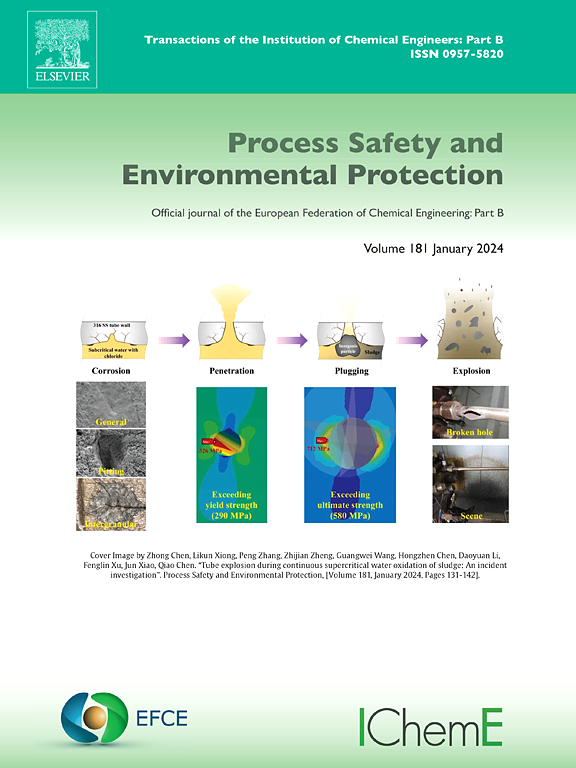HAZOPCT: A HAZOP analysis completeness tool based on knowledge graph reasoning
IF 6.9
2区 环境科学与生态学
Q1 ENGINEERING, CHEMICAL
引用次数: 0
Abstract
Hazard and Operability (HAZOP) analysis is widely recognized as a cornerstone of risk assessment in the chemical industry. However, the reliance on manual processes makes HAZOP analysis time-consuming, labor-intensive, and subject to variability, leading to inconsistent report quality and increased accident risks. To address these challenges, this paper introduces a HAZOP analysis Completeness Tool (HAZOPCT), which helps to review process designs for enhancing the completeness of HAZOP analysis. Initially, a HAZOP knowledge graph is constructed automatically to integrate multi-source process safety information based on a predefined ontology. Subsequently, HAZOPCT is employed to perform reasoning over the knowledge graph, thereby generating recommended conclusions from similar cases for completing HAZOP analysis. A case study focusing on the sulfur recovery process demonstrates the ability of HAZOPCT to efficiently identify hazards and operability issues that may have been overlooked in original HAZOP analysis tables. Additionally, ablation studies validate the critical role of semantic information and graph attention mechanisms in improving reasoning performance. The generated attention weight network further enhances the interpretability of HAZOPCT, offering insights into the automated reasoning process and contributing to a more transparent and reliable HAZOP analysis.
求助全文
约1分钟内获得全文
求助全文
来源期刊

Process Safety and Environmental Protection
环境科学-工程:化工
CiteScore
11.40
自引率
15.40%
发文量
929
审稿时长
8.0 months
期刊介绍:
The Process Safety and Environmental Protection (PSEP) journal is a leading international publication that focuses on the publication of high-quality, original research papers in the field of engineering, specifically those related to the safety of industrial processes and environmental protection. The journal encourages submissions that present new developments in safety and environmental aspects, particularly those that show how research findings can be applied in process engineering design and practice.
PSEP is particularly interested in research that brings fresh perspectives to established engineering principles, identifies unsolved problems, or suggests directions for future research. The journal also values contributions that push the boundaries of traditional engineering and welcomes multidisciplinary papers.
PSEP's articles are abstracted and indexed by a range of databases and services, which helps to ensure that the journal's research is accessible and recognized in the academic and professional communities. These databases include ANTE, Chemical Abstracts, Chemical Hazards in Industry, Current Contents, Elsevier Engineering Information database, Pascal Francis, Web of Science, Scopus, Engineering Information Database EnCompass LIT (Elsevier), and INSPEC. This wide coverage facilitates the dissemination of the journal's content to a global audience interested in process safety and environmental engineering.
 求助内容:
求助内容: 应助结果提醒方式:
应助结果提醒方式:


